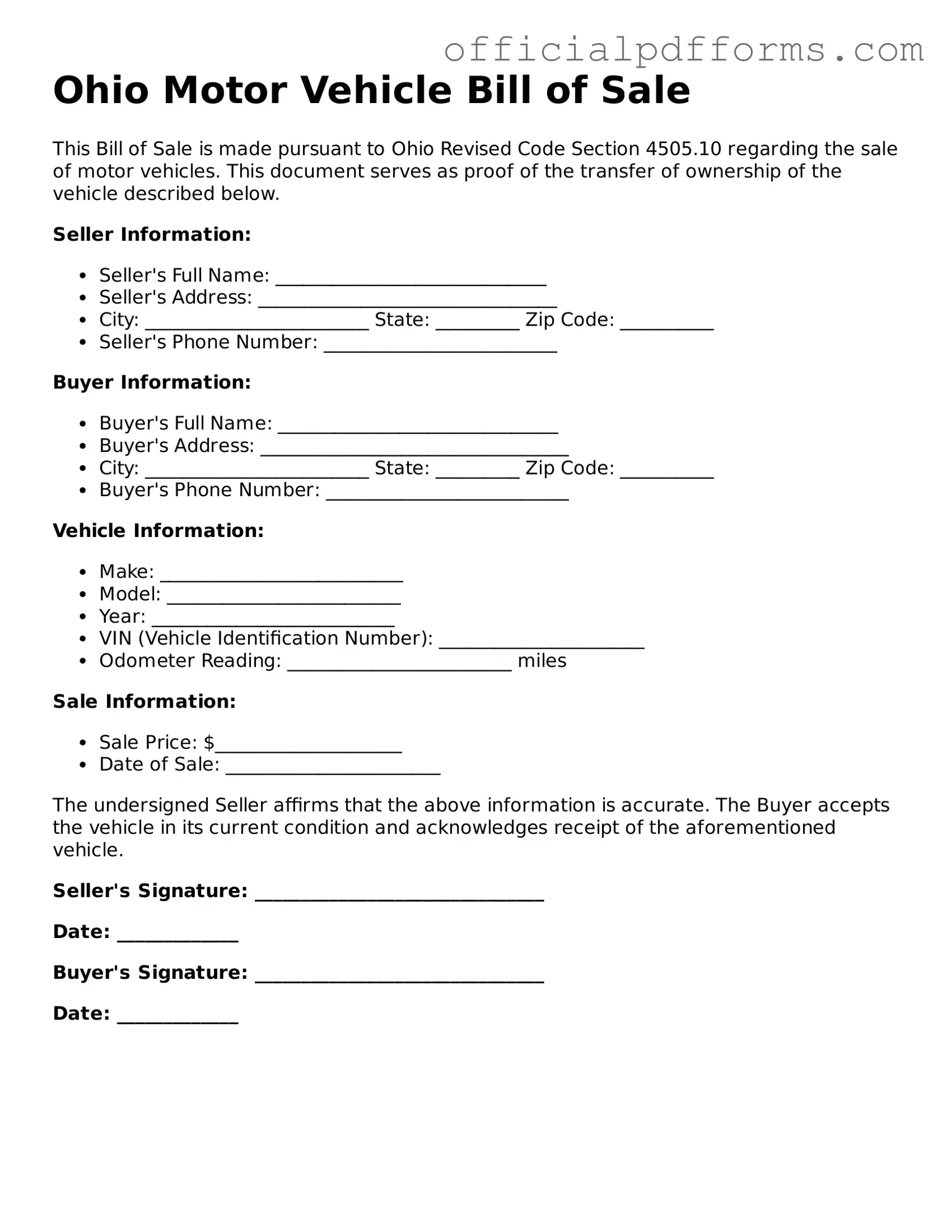The Ohio Motor Vehicle Bill of Sale is a legal document that records the transfer of ownership of a vehicle from one party to another. It serves as proof of sale and includes important details about the vehicle and the transaction. This form is essential for both buyers and sellers to ensure a smooth transfer of ownership and to comply with state regulations.
Why do I need a Bill of Sale for my vehicle?
A Bill of Sale is important for several reasons:
-
It provides a record of the transaction, which can be useful for tax purposes or future disputes.
-
It helps establish the buyer's ownership of the vehicle, which is necessary for registration and title transfer.
-
It protects the seller by documenting that the vehicle has been sold and that they are no longer responsible for it.
The Bill of Sale should include the following details:
-
The full names and addresses of both the buyer and the seller.
-
The vehicle identification number (VIN).
-
The make, model, year, and color of the vehicle.
-
The sale price of the vehicle.
-
The date of the sale.
-
Any warranties or representations made by the seller.
Do I need to have the Bill of Sale notarized?
In Ohio, notarization is not required for a Bill of Sale to be valid. However, having it notarized can add an extra layer of protection for both parties. It can help verify the identities of the buyer and seller, making the document more credible in case of any future disputes.
Can I use a generic Bill of Sale template?
While you can use a generic Bill of Sale template, it is advisable to use the specific Ohio Motor Vehicle Bill of Sale form. This ensures that all required information is included and that the document complies with Ohio state laws. Using the correct form can help prevent issues during the title transfer process.
What should I do after completing the Bill of Sale?
Once the Bill of Sale is completed and signed by both parties, the seller should provide a copy to the buyer. The buyer will then need to take this document to the local Bureau of Motor Vehicles (BMV) to register the vehicle and transfer the title. Keeping a copy for personal records is also a good practice for both parties.
Is a Bill of Sale the same as a title?
No, a Bill of Sale is not the same as a title. The Bill of Sale documents the sale of the vehicle, while the title is the official document that proves ownership. The title must be transferred to the new owner at the BMV, and the Bill of Sale serves as proof of that transfer.
What if I lose my Bill of Sale?
If you lose your Bill of Sale, it may be difficult to prove the transaction took place. It’s important to keep a copy in a safe place. If you cannot find it, you may need to contact the seller to see if they can provide another copy. In some cases, you may also be able to create a new Bill of Sale, but it should be signed by both parties again to be valid.
Are there any fees associated with the Bill of Sale?
There are typically no fees associated with creating a Bill of Sale itself, as it is a document that can be filled out without cost. However, there may be fees when registering the vehicle and transferring the title at the BMV. It’s a good idea to check with your local BMV for specific fee information related to these processes.
